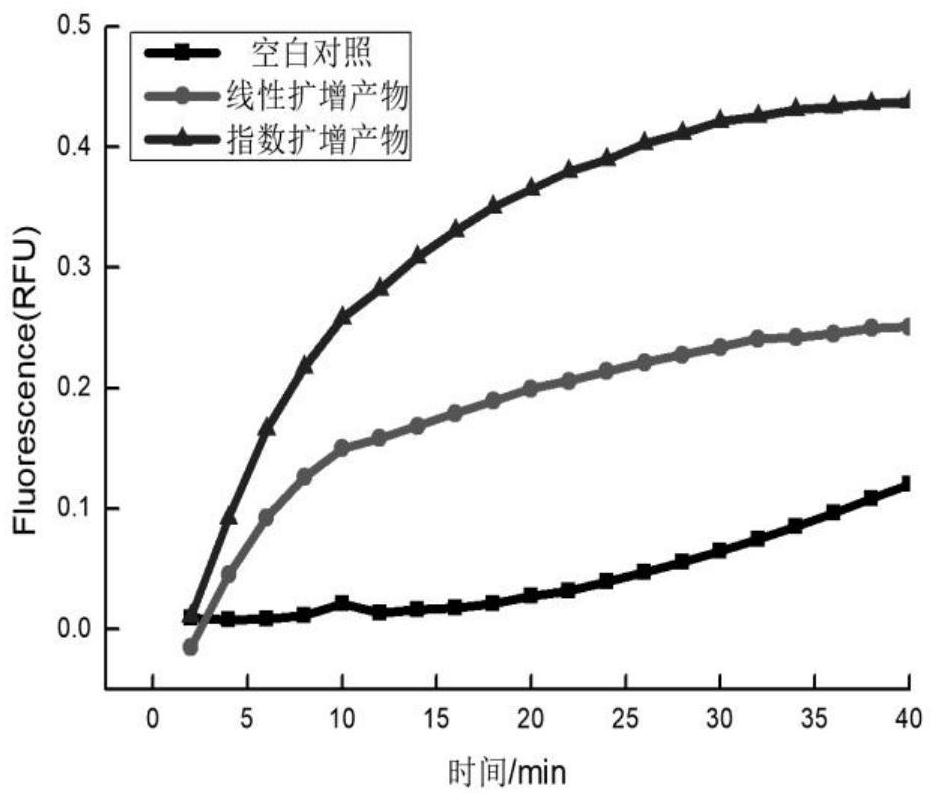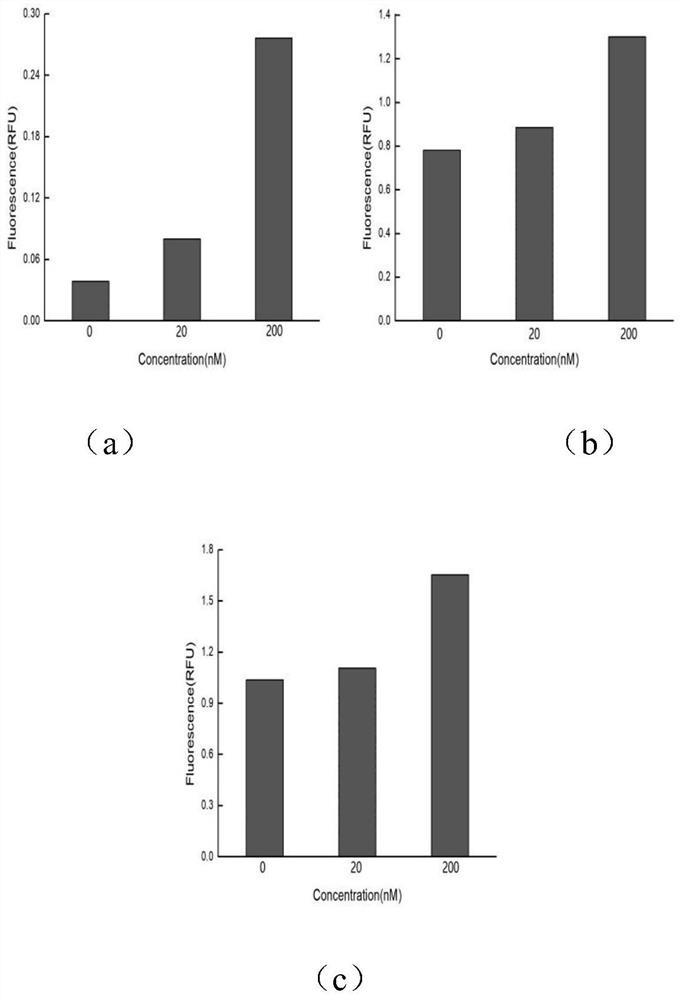A kind of multiple nucleic acid exponential amplification probe and its application in tumor multi-target detection
An exponential amplification, multiple nucleic acid technology, applied in the field of tumor detection kits and multiple nucleic acid exponential amplification probes, can solve the problems of difficult to achieve multiple nucleic acid exponential amplification, poor specificity, low sensitivity, etc., and achieve good clinical practical value. With the application prospect, high sensitivity, the effect of eliminating interference
- Summary
- Abstract
- Description
- Claims
- Application Information
AI Technical Summary
Problems solved by technology
Method used
Image
Examples
Embodiment 1
[0049] Select the mRNA Tk1 in MCF-7 cells as the tumor target nucleic acid, synthesize oligonucleotides with the same sequence as Tk1 mRNA to simulate the target to be tested, the reaction concentration of TK1 padlock is 500nM, the reaction concentration of target nucleic acid Tk1 to be tested is 100nM, and react at 65°C , 5min, cool at room temperature for 1h; add 1μL 100U / μL T4 ligase, react at 16°C for 2h, 65°C for 10min, to ligate the TK1 padlock into a circular template. Take 4 μL of TK1 padlock connected into a circle (reaction concentration 100 nM) for amplification, the amplification reaction system is 20 μL in total, including 4 μL of the TK1 padlock connected into a circle above, 1 μL of 20 μM forward amplification primer, 1 μL of 20 μM reverse amplification primer, 2 μL 10× isothermal amplification buffer; 1 μL 10mM dNTPs; 5 μL 5M betaine; 1 μL 100mM Mg 2+ ; 1 μL 10 μM fluorescent probe; 2 μL H 2 O; 2μL 2U / μL Bst DNA polymerase to react at 65°C for 3h, then at 80°C...
Embodiment 2
[0052] Taking MCF-7 as an example, a variety of tumor target nucleic acids with important clinical significance in MCF-7 were selected for detection (Tk1, PFN1, GAPDH). Ligation reaction, amplification reaction experimental process as mentioned above, image 3 (a) shows the real-time fluorescence values detected by Cy5 as a signal probe when different concentrations of Tk1 are exponentially amplified for 1 hour. The first red column from the left is the blank control, and the second red column is after 20nM Tk1 amplification The obtained fluorescence value, the third red column is the fluorescence value obtained after 200nM Tk1 amplification, it can be seen from the figure that the higher the concentration of Tk1, the higher the fluorescence value obtained by amplification, and the fluorescence value of the blank control is significantly lower Fluorescence value in the presence of target. (b) The picture shows the real-time fluorescence value detected by Texas Red as a sig...
PUM
 Login to View More
Login to View More Abstract
Description
Claims
Application Information
 Login to View More
Login to View More - R&D
- Intellectual Property
- Life Sciences
- Materials
- Tech Scout
- Unparalleled Data Quality
- Higher Quality Content
- 60% Fewer Hallucinations
Browse by: Latest US Patents, China's latest patents, Technical Efficacy Thesaurus, Application Domain, Technology Topic, Popular Technical Reports.
© 2025 PatSnap. All rights reserved.Legal|Privacy policy|Modern Slavery Act Transparency Statement|Sitemap|About US| Contact US: help@patsnap.com



